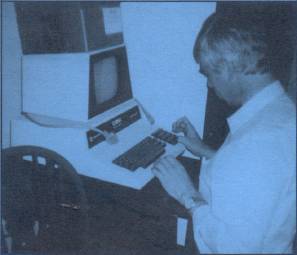| |
(This article was first published in the ICPUG
Journal JAN/FEB 1989 issue.
Permission from Joe Griffin to republish on the Internet has been
received.)

MULTISOFT ASSEMBLER - REVIEW
A long, long time ago when the PET was young, an enterprising man called
Richard Leman wrote an assembler for the 2001. With only 8K available (hear
that all you Amiga-ites), he was very limited on what features he could
include in the machine. As other machines were introduced so Richard's
assemblers grew. At the same time, so did his reputation. In 1985 Commodore
asked
Richard to produce an assembler package to run on their then current
machines; 64, Plus/4 and 128. This package was to be sold as a Commodore
product under the Multisoft name.
So what, I hear you ask, do you get for your £? . Firstly there is
a disk containing an assembler and editor for each of the three machines.
The C-64 version includes DOS support and a monitor. A number of example
programs are included on the disk.
The editor provides the features one has come to expect of
an assembly language editor: Auto line numbers, Delete, Find, Change,
Renumber, Do (the first line), Scrolling (using the function keys). Most of
the commands can be used in BASIC programming as well, hence the title of
the package.
The assembler is similar to the Commodore Assembler from
the PET library, it is not a full macro assembler (but how many people
really need one) and uses the standard MOS op-code instruction set. Four
types of output file can be generated - Listing, Interface, Program and
Symbols. The amount of material in the listing file canbe controlled using
the assembler options and directives. The interface file is similar to the
Object file of the PET assembler, h is needed 4 the output is to go to the
XL EPROM programmer. The program file contains a direct binary version of
the output and the symbol file contains the addresses of all labels used in
the program.
The assembler can be run with a SYS call, containing the
file name and assembler options. By this means, a BASIC command file can be
written to control the entire assemble process.
Finally, the package comes with a detailed 60 page A5
manual, describing the operation of the package. Well worth having. If you
have a C-64, Plus 4 or 128 .
|

